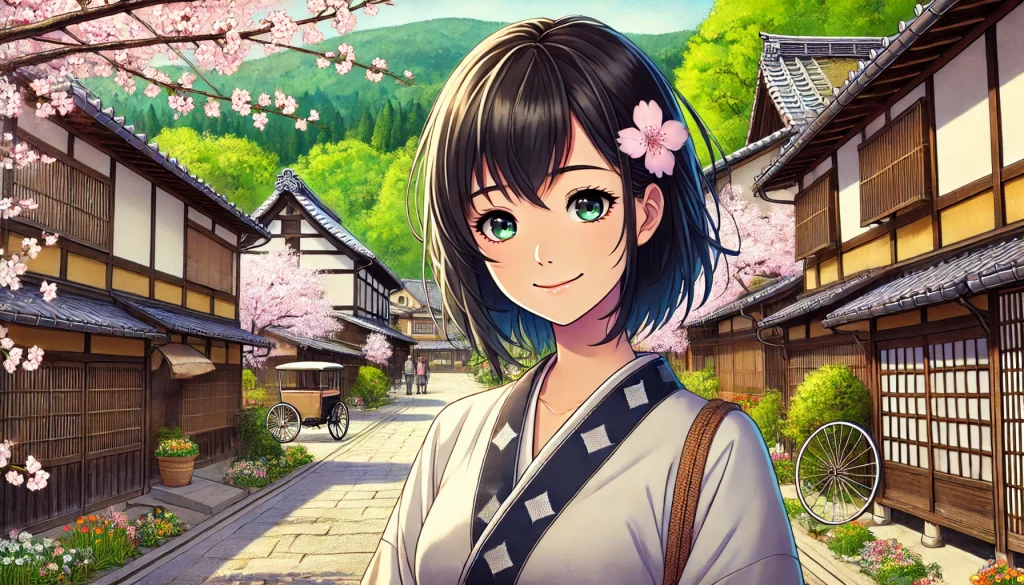Mio’s Introduction to Nakasendo
Hello, I’m Mio! Today, I’d like to introduce you to one of my favorite places, the Nakasendo.
Exploring History and Nature: Nakasendo Trekking Overview: The Nakasendo, one of the five main routes during the Edo period, connects Nihonbashi in Tokyo to Sanjo Ohashi in Kyoto. Spanning approximately 540 kilometers, it features historical post towns and beautiful natural scenery. The Nakasendo offers a unique blend of history and nature, making it a popular destination for trekking enthusiasts and history buffs alike.
Spring on the Nakasendo
Spring on the Nakasendo brings fresh greenery and blooming flowers. The post towns and trails are adorned with beautiful cherry and plum blossoms. Strolling through historical post towns like Magome-juku and Tsumago-juku, you can fully enjoy the spring scenery.
Summer on the Nakasendo
Summer on the Nakasendo features lush green trees and cool breezes. The mountain trails, with their rivers and forests, provide a refreshing escape from the summer heat. It’s a perfect time for hiking and camping.
Autumn on the Nakasendo
Autumn on the Nakasendo is highlighted by stunning autumn foliage. The Kiso Valley and Mino Road are particularly beautiful, with the vibrant colors of the leaves contrasting against the historic townscapes. Walking the ancient trail in the crisp autumn air is a special experience.
Winter on the Nakasendo
Winter on the Nakasendo offers serene snow-covered landscapes. The snow-covered post towns and trails create a timeless atmosphere, making you feel like you’ve stepped back into the Edo period. Enjoying a warm hot spring bath amidst the winter cold is also a delight.
Nearby Attractions
- Magome-juku: A post town with cobblestone streets and old buildings.
- Tsumago-juku: A post town that retains its Edo period charm.
- Kiso Valley: Known for its beautiful natural scenery and historic trail.
Access Public Transportation:
- Train and Bus:
- From Tokyo, take the Chuo Main Line to Nakatsugawa Station or Kiso-Fukushima Station, then access various post towns by bus or on foot.
Note: Since Japanese rail and bus schedules are subject to change, please check with the respective railway and bus companies for the most up-to-date information.

- Utsukushigahara:Enjoying the Changing Seasons
- Mount Norikura:Majestic Mountain Scenery
- Aokigahara:the Serenity of Forest and Lake
- Sakurajima:Feeling the Energy of a Volcano
- Nakasendo:Walking the Ancient Road
- Kurobe Gorge:the Beauty of the Gorge
- Lake Toya:Harmony of Forest and Lake
- Tango Peninsula Trekking
- Mount Takao Trekking
- Miura Peninsula
